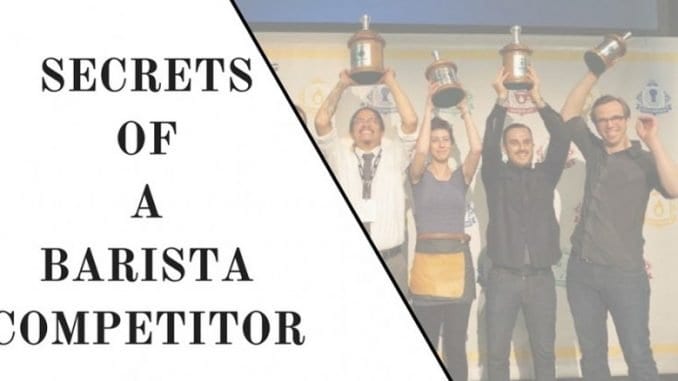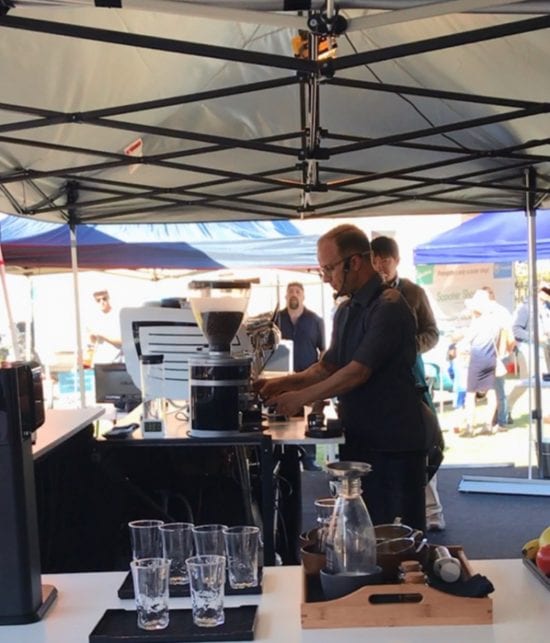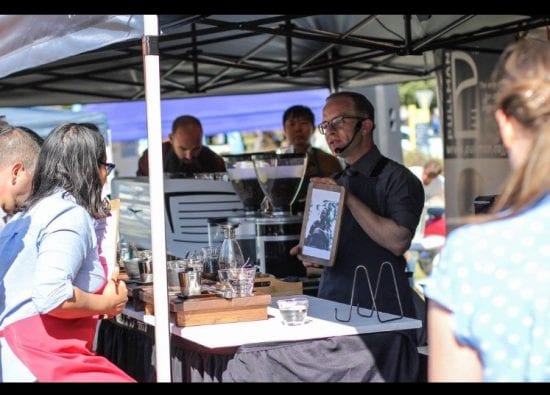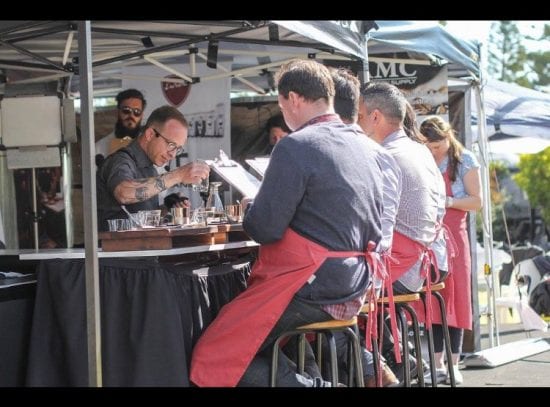
In this series, we’ll share the secrets of barista competitors. From choosing a theme to how to set a practice schedule, we’ll talk to seasoned competitors about how to compete smartly, efficiently, and effectively.
Barista competitions are challenging. You can pull excellent shots and tell the judges about your espresso with notes of lavender, chocolate, and ginger, but there’s no way of knowing if the judges will agree with you. What you do have control of, however, is how you move around your space and interact with the espresso machine. Luckily, there’s a whole category for that. It’s called the technical evaluation.
Your tech scores are the single easiest score to improve, and yet the category most baristas miss. “Most experienced baristi have great control over their hand/eye coordination but taking it to the next level requires an eagle eye for the smallest details and a thought process that can see that there is always a more efficient way to do simple things,” shares Adam Metelmann, who runs Technical Operations for Pullman Espresso Accessories in Australia. Adam is the 2016/2017 Western Regional Barista Champion, and will be competing in the semi-finals of the Australian Barista Championship early next year. He was the Northern Regional Barista Championship during the 2014/2015 season, and placed 7th at the 2015 national competition.
During his most recent routine, Adam scored a nearly perfect score of 70 out of 71 points on his technical evaluation. And Adam says that acing the technical evaluation is all about control. “You may not be able to control how a judge tastes something in the cup but you most certainly can control with precision how it gets in there.” For the Qualifying Events in Knoxville and Austin, your technical scores will make up 27% of your overall score (at USBC and WBC it’s 17%), so here are some suggestions from Adam about how to ace your technical scoresheet.

- Read the rules!
“This is a simple one, but so many competitors I speak with (both first timers and seasoned athletes) read the technical score sheet once or twice and then don’t go back,” says Adam. “This astounds me because all the points that are yours for the taking are listed right there!” Being a seasoned barista or an experienced competitor doesn’t necessarily make you an expert, and the nice thing about this evaluation process is that all the rules are right in front of you—the technical scoresheets are sort of an evaluation of who read and understood the rules best. If you’re confused about what you need to go, always go back to the rules.
- As with many things in coffee, consistency is king.
There are some ambiguities in correct techniques in coffee, like how you should distribute or dose your coffee. In barista competition, there is no right or wrong—you simply must decide what you want to do and do it the same way each time. “No matter your technique, just make sure it follows the same process and it’s performed the same time every time.” If you decide to settle your coffee by knocking the portafilter down, make sure not only that you do that each time, but that you knock the portafilter down the same number of times each time.

- Analyze your movement.
“It is very easy to get into a flow with making coffee but have you broken down every single stage of what you are doing? The hand you grab the portafilter with, the way you hit the strike bar to remove the puck, the way you wipe the counter, the method of dosing and distribution…” notes Adam. Being aware of your natural movements and habits is key, and it can be more difficult to isolate bad habits than you think. “A great way to overcome this is to ask a friend to watch your movements and note them down, or even better to record you via a camera or phone. Going back over the footage (of course using the tech scoresheet as a guide to mark yourself) and you may very well see yourself doing something completely different to what you thought you were doing.”
- Slow down!
Mistakes are easy to see when you look stiff. “When you watch a dancer or sportsperson on the top of their game, they make their movements look effortless.” Slowing down forces you to relax and more intentionally. “I used to always feel like I had to move extremely quickly with so much to achieve within 15 minutes. This made my movements look very robotic and actually caused me to make more mistakes.” By slowing down, you can eliminate unnecessary movement and create fluidity from action to action. “I really analyzed my motion, taking out the wasted movements and found that the slower and more controlled I moved, the faster and more fluid I actually could perform a task.”
- Retrain your hand and brain pathways.
“I read somewhere years ago that swapping your dominant hand to brush your teeth everyday would eventually create new pathways in your brain and wondered if this was actually true? I tried it for a while and found that as wrong as it felt, it wasn’t long before I could brush my teeth effectively with my non-dominant hand.

How could I now incorporate this into my movement on a stage?” Adam notes a specific moment during his routine where retraining his brain was key: “The counter top cloth: based on the best position for this cloth on the machine table, I would use my non dominant hand to grab it, swap it into my dominant hand the wipe my workspace. I would then have to either cross over myself or swap hands again place back to its starting position, purely because this was the way I had always performed a simple task of wiping a bench.”
Through retraining his brain, he was able to create fewer, cleaner movements by using his non-dominant hand. “It took some time to reprogram my brain but eventually I got used to a single movement, using the hand I grabbed the cloth with to wipe the counter and returning it back to its place, stopping the cloth from having to be switched in my hands for use.” And perhaps this seems small, but wasted movements are everywhere in your routine if you really break down every motion. “I started to become ruthless with my actions and motion and after dissecting every single movement around the machine and stage, I found close to two minutes of wasted time over all the courses!”

